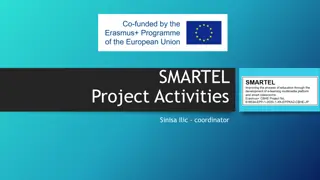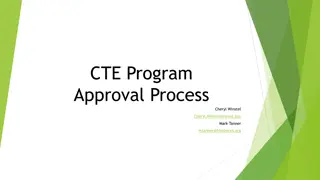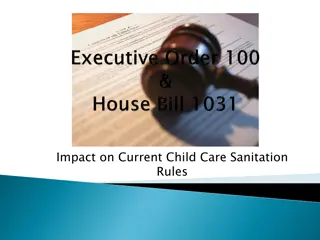Safety Awareness in CTE Classrooms: Practical Interventions
This presentation focuses on enhancing safety awareness in Career and Technical Education (CTE) classrooms. It addresses deficiencies in safety practices, perceived obstacles, and the importance of personal protective equipment (PPE). Strategies for creating a safer environment through lighting levels, air quality, facility assessments, and record-keeping are discussed. Additionally, it suggests developing an action plan for improving safety practices in CTE labs.
Download Presentation

Please find below an Image/Link to download the presentation.
The content on the website is provided AS IS for your information and personal use only. It may not be sold, licensed, or shared on other websites without obtaining consent from the author. Download presentation by click this link. If you encounter any issues during the download, it is possible that the publisher has removed the file from their server.
E N D
Presentation Transcript
SAFETY IN THE CTE CLASSROOM Presented by: Julie Dainty Jon Jones Kevin Elliott Technical Teacher Education, Pittsburg State University
Objective: To provide affordable suggestions and interventions to raise safety awareness, and reduce liability, in ALL CTE labs and classrooms Discussion Focus What Does the Research Say? Eye Protection Hearing Protection Lighting Levels Assessing Your Facility Good Record Keeping Action Plan Giveaways
What does the research say? The Study: Data Collected in 2014 Population: Secondary CTE teachers in areas with higher safety concerns Electronic survey distribution (Survey Monkey) Research Questions: 1. What is the distribution of practicing secondary CTE instructors with a structured occupational safety and health program as an integral component of their curriculum and instruction? 2. What perceived obstacles and deficiencies are associated with safety and health practices within CTE?
What does the research say? DEFICIENCIES: 78% report implementing a comprehensive Occupational Safety and Health program as an integral part of curriculum and instruction. 49% report funds are allocated for this purpose. Less than 50% of respondents conduct a walkthrough inspection with safety checklists to identify potential hazards. Only 26.9% maintain an updated record of chemical inventory. 62.8% require a 100% on a safety exam prior to participation in a laboratory setting.
What does the research say? PERCEIVED OBSTACLES Lack of Funding High Student Enrollment per Class Chronic Student Absences Lack of Adequate classroom/laboratory Space
PPE in the CTE lab and classroom Eye Protection Hearing Protection
Providing a safer environment Lighting Levels Air Quality
Providing a safer environment Assessing your facility Audit Instruments Keeping good records Machine Maintenance Schedules Accident Reports
Developing your Action Plan List Three actions you can complete when you return to your facility
Drawing for Instruments Light Meter Decibel Meter
Questions and Resources Your Questions All of these resources, including this slide presentation and handbook, are available at the Kansas Center for Career and Technical Education (KCCTE) website:
References Dangerous Decibels- http://dangerousdecibels.org/ Lighting Levels- http://www.e2energysolutions.com/ Missouri Facility Inspection Checklist- http://ehs.missouri.edu/work/pdf/safety-insp.pdf OSHA Indoor Air Quality- https://www.osha.gov/dts/osta/otm/otm_iii/otm_iii_2.html Decibel Thermometer- sight and hearing.org
Contact Information Julie Dainty - jdainty@pittstate.edu Jon Jones - jon.jones@pittstate.edu Kevin Elliott - kselliott@pittstate.edu Pittsburg State University Kansas Technology Center 909 E Ford Pittsburg, KS 66762























